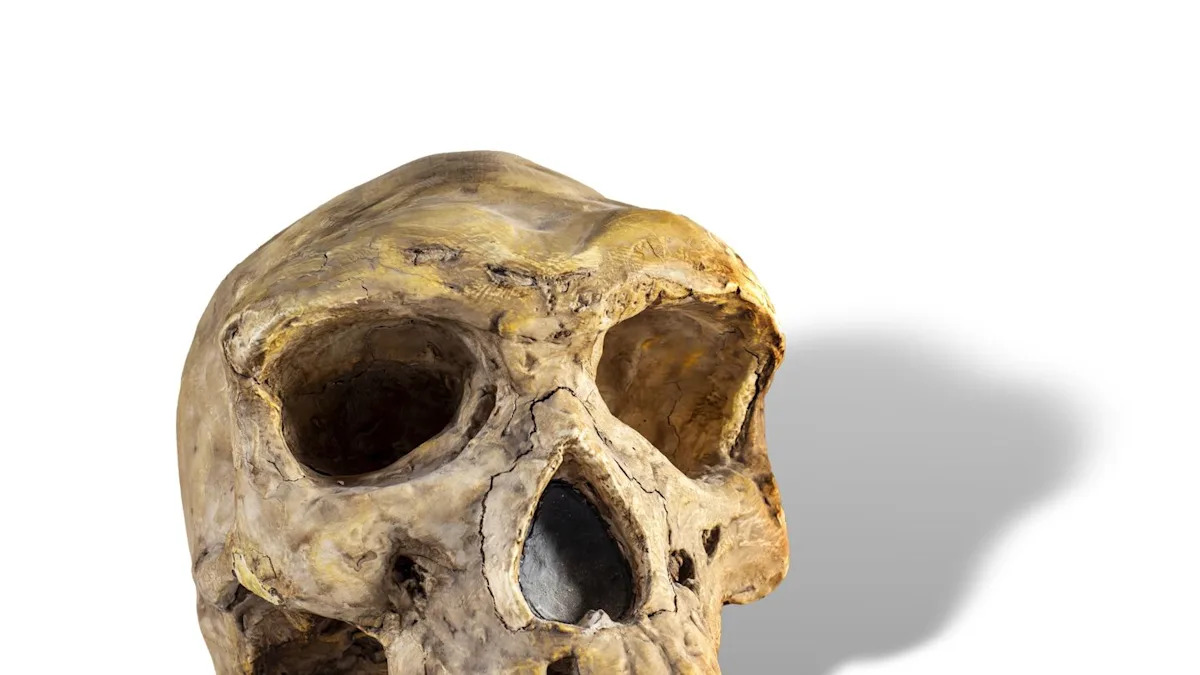Here is what you will learn when you read this story:
-
Fossilized human teeth spanning two million years of evolution were studied for lead content, which was surprisingly high.
-
To see the effect of lead on the human brain then and now, researchers created brain organoids with ancient and modern variants of a gene necessary for brain development.
-
When exposed to lead, the organoids with the ancient variant suffered, and also experienced dysfunction of another gene involved in speech and language.
Homo sapiens gained an evolutionary edge over human ancestors such as Neanderthals, especially our larger brains, but we might have also had an unexpected advantage in a gene that protected us from lead poisoning.
Lead can be lethal. Makeup, paint, piping and other products that may have contained lead decades ago have since been reformulated, but this infamous neurotoxin isn’t just found in substances created by humans. There was lead practically everywhere on Earth long before we began manufacturing anything. It occurs in rocks, soils, sediments and bodies of water, and while lead content is not always at high enough concentrations to pose a hazard, some environmental processes produce dangerous amounts of lead on their own.
Emissions from volcanic eruptions and wildfires, along with erosion and the stripping of surface layers, can all release lead into the environment. Especially vulnerable to contamination are waterways and anywhere water is collected after rains or floods. It can also accumulate in minerals that crystallize from water or magma. Lead found in the bodies of animals who have perished accumulates in the bones and teeth, and tooth enamel is stable enough to hold on to lead for especially long periods of time.
It was the teeth of ancient hominids (all human ancestors) and hominins (specifically the Homo and Pan species) that told an international team of researchers how much lead they were unknowingly ingesting. The element was found in the enamel and other tooth layers of 51 human ancestors from Africa, Asia, Oceania and Europe who existed over 2 million years. 73% of the specimens tested positive for lead. 1.8-million-year-old fossils of extinct ape Giantopithecus blacki had enough lead in its system to equal lead poisoning from anthropogenic sources such as materials and factories. If the problem was that severe, it must have had an impact on the brain.
“By analyzing many geographically and ecologically diverse taxa, we observed that lead exposure was not isolated or confined to postanthropogenic lead release,” the researchers said in a study recently published in Science Advances. “Still, intermittent exposure to lead from external sources and internal skeletal stores was more likely to be pervasive throughout primate evolution and even more so in hominids.”
To investigate further, the researchers grew brain tissue in the lab to create brain organoids, though these more primitive versions that emerged from stem cells are not exact analogs for the adult brain and its advanced functions. They grew organoids with both ancient and modern variants of the NOVA1 gene, which produces an RNA binding protein for neurons that is critical to mammalian brain development and neuromuscular control. The tissue was then exposed to lead. Organoids with the ancient NOVA1 variant showed dysfunction in the gene FOXP2, which gives instructions for producing a protein that controls the activity of other genes necessary for speech and language.
The ancient NOVA1 variant was not as effective as the modern variant was at protecting against the stress lead causes for neurons. Because modern humans have more advanced communication capabilities than their predecessors, they were better able to alert others that something was off. It might have been one reason that other hominid and hominin species eventually went extinct.
“While we acknowledge that primate species have various social behaviors, this finding bolsters our proposition that lead exposure played a noteworthy role in their evolution by affecting neurosocial pathways, such as group-level social cohesion, providing a relative survival advantage to modern humans over Neanderthals,” the researchers said.
The findings have been controversial. Other scientists who were not involved in the study argue that the claims are speculative, especially because there was a limited amount of fossils that did not necessarily account for all human ancestors over a span of 2 million years. However if there is one thing we have that Neanderthals and Denisovans lacked, it is language. That could have meant the difference between life and death.
[galleryCarousel id=’de167689-875b-446c-ad75-9c0ce826700a’ mediaId=’6dfcc70e-ccc6-479f-93b7-1b0351c84a87′ display=’carousel’ align=’center’ size=’medium’ share=’true’ expand=” captions=’true’ suppress-title=’false’ hasProducts=’false’][/galleryCarousel]
You Might Also Like
First Appeared on
Source link












